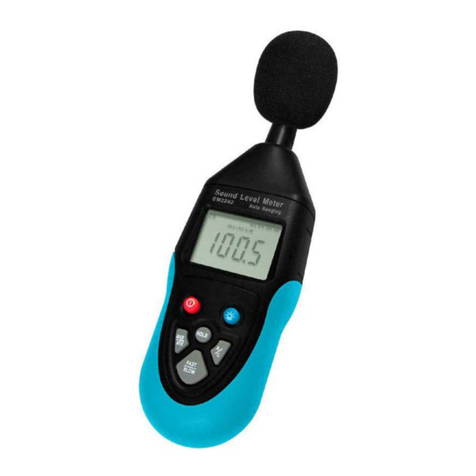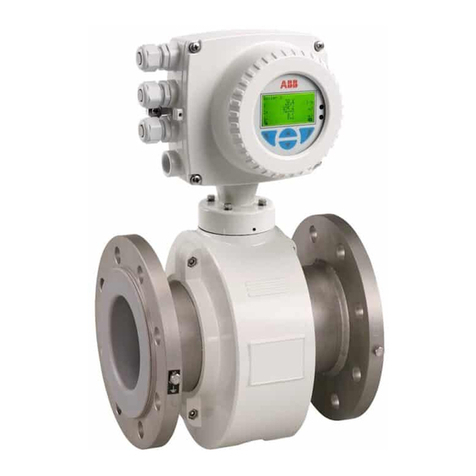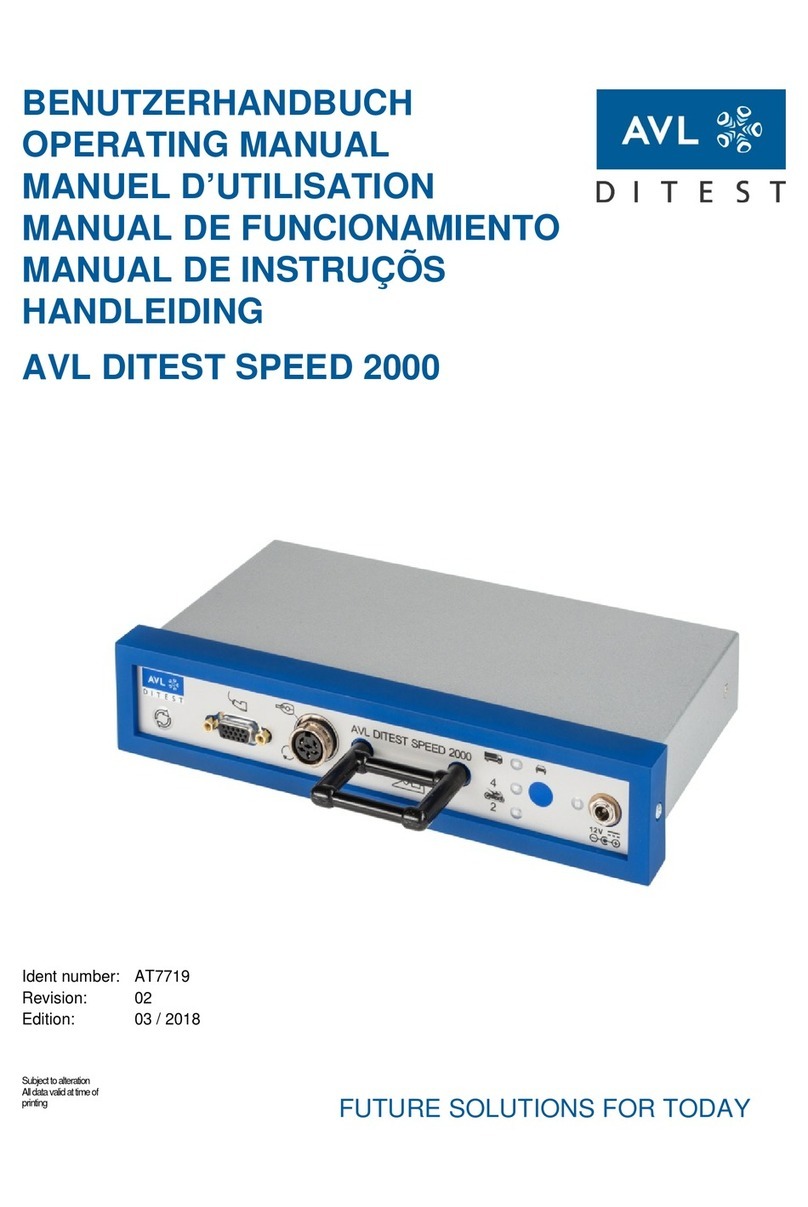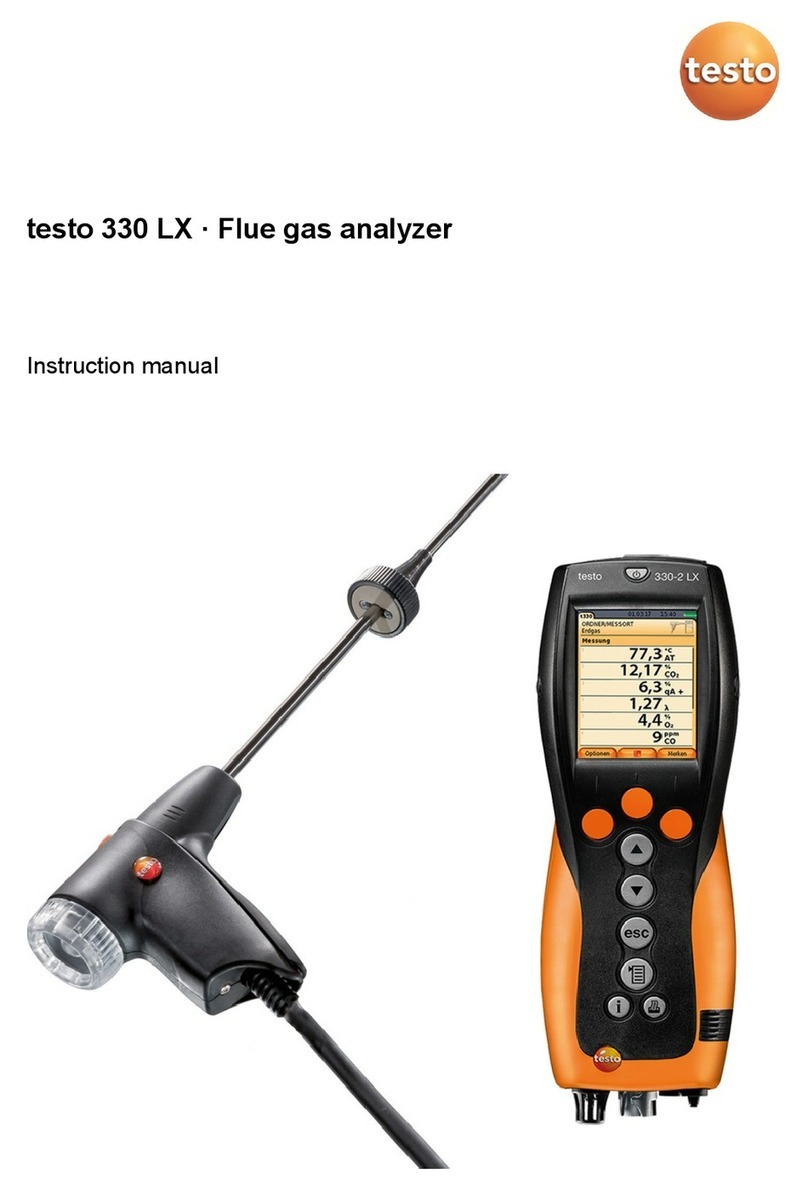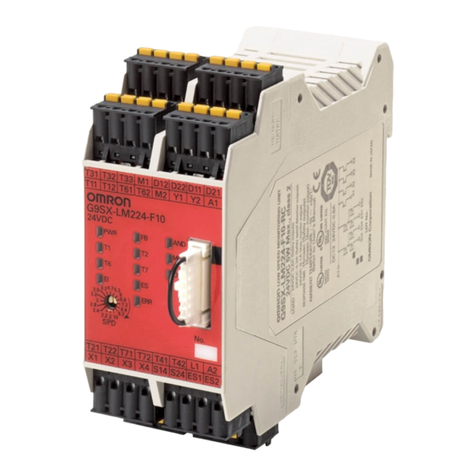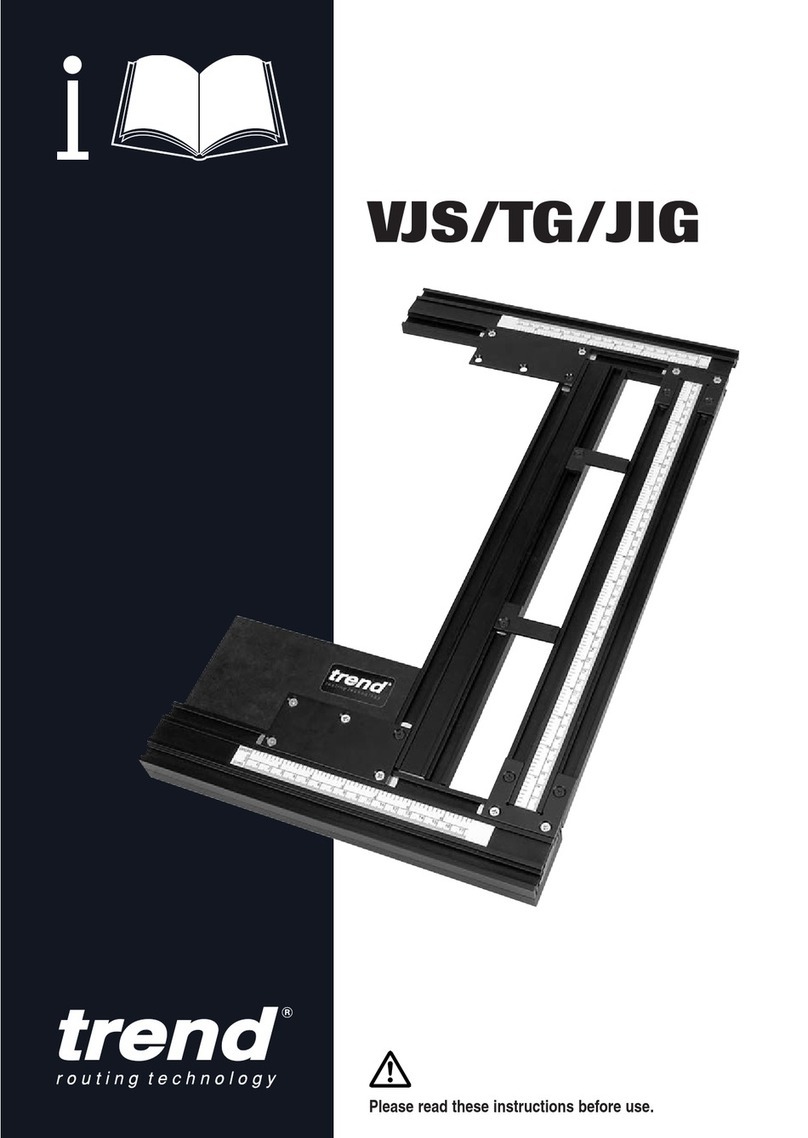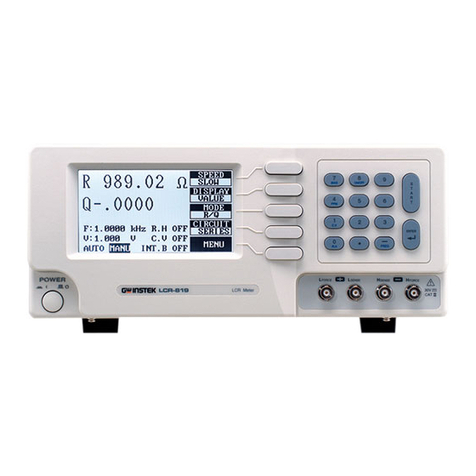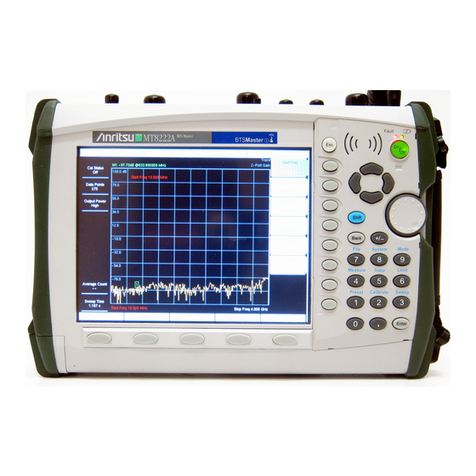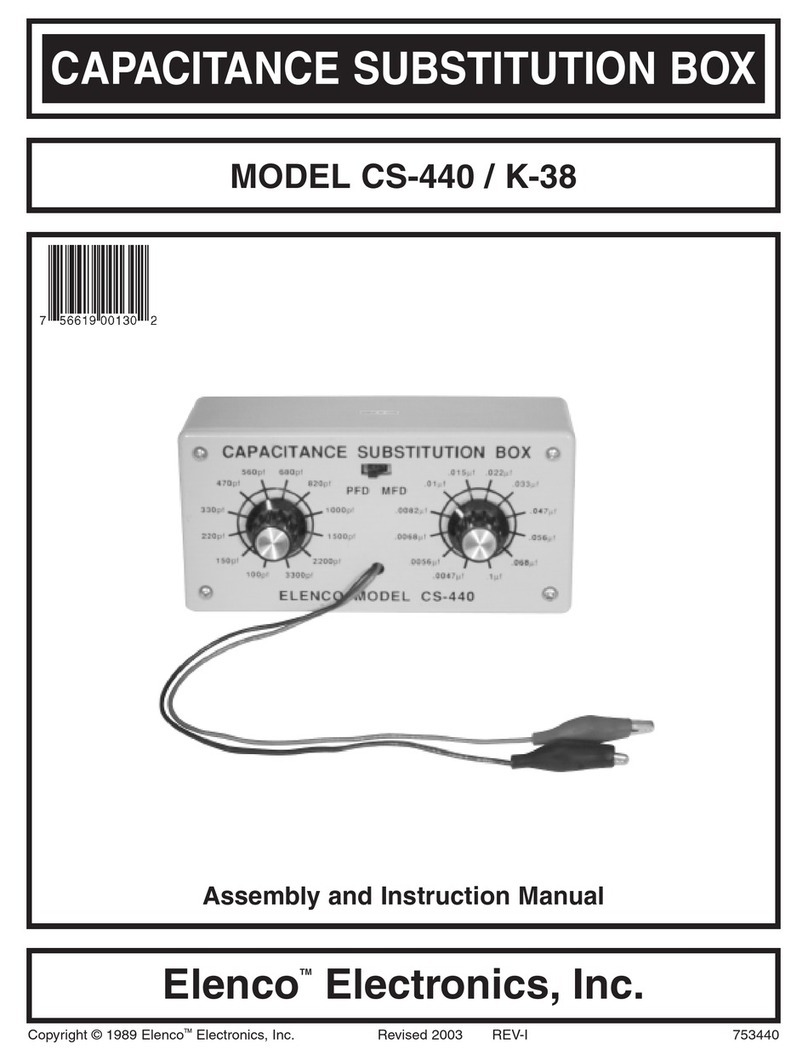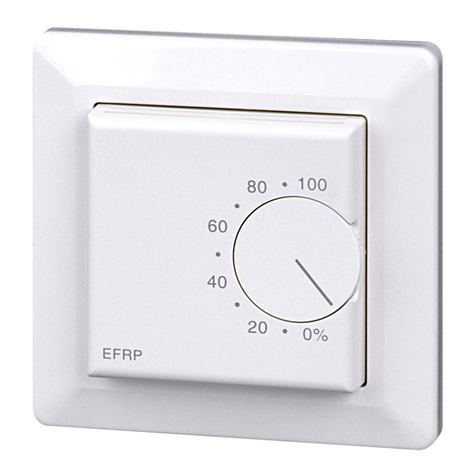CRX SW Brushless Series User manual

SW Brushless Series
Kero Start
Full Auto Start with Restart
Operations Manual
Written by CRX Turbines - Andrew Fioretti
Ver. 203107

Pg. 2
Table of Contents
Introduction..........................................................................................................5
Non- Disclaimer ....................................................................................................5
Safety First ...................................................................................................... 5
Warning to Bystanders.................................................................................... 6
Fire extinguishers............................................................................................ 6
Failsafe..........................................................................................................6
Ear Protection...............................................................................................6
Burns ............................................................................................................6
Turbine Oil Toxicity .......................................................................................6
Ground Assistants ........................................................................................6
Turbine Oil ...................................................................................................... 7
CRX/SWIWIN Limited Lifetime Warranty..............................................................7
Terms.............................................................................................................. 7
Exclusions ....................................................................................................... 8
Operation and Setup ............................................................................................9
Preparation of Fuel ......................................................................................... 9
Motor Setup.................................................................................................. 12
Introduction ...............................................................................................12
Radio Setup and Radio Training –Study RC................................................... 13
Startup Operation......................................................................................... 13
Shutdown Procedure .................................................................................... 14
ECU .....................................................................................................................18
ECU/Motor Electrical Connections ................................................................ 18
Maximum Voltage for Main Power ............................................................18
Receiver voltage .........................................................................................18
ECU/GSU Operation............................................................................................20
GSU Screen Button Function ......................................................................... 20
Initial Screen...............................................................................................20
Large font Running Screen .........................................................................20
Main menu –initial screen.........................................................................20
Start Up Screen ..........................................................................................21
Study RC –train the transmitter to the ECU ...............................................22

Pg. 3
Max –Throttle up, trim up.........................................................................22
Running Menu............................................................................................22
Starter ........................................................................................................24
Test function menu ....................................................................................24
Other ..........................................................................................................25
Data chart...................................................................................................24
USB Adapter ................................................................................................. 25
Software Updates...............................................................................................26
Engine Diagrams.................................................................................................27
Specifications......................................................................................................28
ECU Parameters –Brushless starter ...................................................................29
Diagrams
Figure 1 Minimum Safe Distance.....................................................................................................5
Figure 2 Items Included in Motor Kit ...............................................................................................9
Figure 3 Brushless Pumps...............................................................................................................10
Figure 4 ECU Connections and Power Connection........................................................................10
Figure 5 Engine Connection and Pump ..........................................................................................11
Figure 6 ECU Connections.............................................................................................................11
Figure 7 Motor Setup......................................................................................................................11
Figure 8 Telemetry Spectrum Diagram...........................................................................................11
Figure 9 Telemetry Cabling ............................................................................................................12
Figure 10 Spectrum Cable...............................................................................................................12
Figure 11 Plumbing for pumps........................................................................................................13
Figure 12 Version 2 Brushless ECU.............................................................................................16
Figure 13 V3 ECU ..........................................................................................................................16
Figure 14 Power and Control Connections.....................................................................................16
Figure 15 Throttle Cable.................................................................................................................16
Figure 16 Engine and Pump Connections.......................................................................................16
Figure 17 GSU................................................................................................................................16
Figure 18 Optional Temp/RPM Monitor......................................................................................16
Figure 19 Engine Cable (Female to Female Mr30).........................................................................16
Figure 20 Pump Cable (Male to Female MR30).............................................................................17
Figure 21 Power Cable....................................................................................................................17
Figure 22 GSU Screen....................................................................................................................20
Figure 23 GSU Status Screen..........................................................................................................20
Figure 24 Large Data Screen...........................................................................................................20
Figure 25 Running Information ......................................................................................................21
Figure 26 Startup Menu..................................................................................................................21
Figure 27 Study RC Menu..............................................................................................................22

Pg. 4
Figure 29 Running Menu................................................................................................................23
Figure 28 Cooling Menu.................................................................................................................22
Figure 30 Starter Menu...................................................................................................................24
Figure 31 Data Chart.......................................................................................................................24
Figure 32 Test Menu .......................................................................................................................24
Figure 33 Other Menu.....................................................................................................................25
Figure 34 USB and Cable ...............................................................................................................25
Figure 35 Software UpdateApplication..........................................................................................26
Figure 36 SW45B Diagram.............................................................................................................27
Figure 37 SW 60 and 80B...............................................................................................................27
Figure 38 SW 120 and 140B...........................................................................................................28
Figure 39 SW 160, 170, 190 and 210B...........................................................................................28
Written by CRX Turbines - Andrew Fioretti
Ver. 203107

Pg. 5
Introduction
This manual is intended to aid the user in setup and running practices associated with the
SWIWIN SW and CRX series micro turbines. This manual is not intended to take the place
of a primer on micro-turbines. It is assumed that the user has working knowledge and
experience with turbines and that each user is familiar with best practices before attempting
to run a turbine.
Non- Disclaimer
Turbines are inherently dangerous to run. Please read these instructions completely over
and over then read them over and over AGAIN. You must be entirely familiar with the
operation of this turbine before attempting to run this unit. It is strongly advised that if
this is a first time turbine that the user engage the help of a seasoned pilot or turbine
mechanic in order to help to familiarize the user with the operation and to minimize
potential risks involved. This entails risk to the engine and risk to yourself and any
bystanders.
SWIWIN USA/CRX will not assume any responsibility for any damages or injury to the user
or bystanders. Our responsibility is explicitly limited to the motor and to the internal
workings and ancillary supplies offered with the turbine.
SWIWIN USA/CRX advises ALL users (novice or pro) to test their motors in a test stand
before mounting them in a plane. The reason for this is to familiarize yourself with
SWIWIN motor operation and to ensure reliable operation before mounting the engine in
the plane.
If you have any questions, do not run the turbine. If
you are unsure about how to operate the unit, do not
run the turbine.
Safety First
Users need to be versed in model jet turbine operation. Purchaser
acknowledges the risks and dangers involved
.
Turbines are potentially
hazardous to operate and pose a risk to the user and any bystanders.
Risk of expelled compressor blades (front
Risk of expelled turbine blades (rear)
Risk of Burns
Risk of long range effect of inhalation of smoke from turbine
oil additives
Risk of death or injury due to loss of control of a turbine or
turbine model
User accepts full responsibility for all risks including those to any bystanders.
Figure 1 Minimum Safe Distance

Pg. 6
User accepts responsibility and bares all risks associated with operation of SWIWIN/CRX turbine
engines.
Warning to Bystanders -
User acknowledges the risk of injury or burns to bystanders during
start-up or while operating a turbine.
User agrees to take all steps necessary to ensure that
all persons are situated a safe distance from the operations of the engine.
Please refer to figure 1. Always ensure, that all bystanders maintain a safe distance from the engine.
At least 10m (30ft) clear of the area to the side and rear of the engine, Turbines rarely catastrophically
malfunction but in the rare event of an issue, it is best to maintain a safe distance.
Fire extinguishers –It is absolutely crucial to have at least one CO2 extinguisher and a Class ABC
extinguisher on hand at all times. CO2 is the only recommended application for a motor fire. A dry
chemical extinguisher will work to extinguish a motor fire but the residue left behind from dry
chemical extinguishers does heavy damage to a running turbine. If a chemical extinguisher is used to
extinguish a running engine fire, the motor will need to be completely disassembled and cleaned.
The warranty is void if dry chemical extinguisher is ever used to extinguish a turbine fire.
Important Note: Please be sure to inspect all extinguishers each day that a turbine is being used.
There is nothing more disheartening than watching a plane burn because a fire extinguisher was not
operational when needed.
Failsafe
-
Failsafe. Please read carefully on the notes on setting the failsafe on your radio to ensure
safe operation in event of interference or loss of signal.
Ear Protection –Turbines produce excessive Db levels of noise. Always use ear protection when
running the engine.
Burns - Exhaust gases are very hot (up to 1000°C/1800°F) and can cause burns to skin or damage to
objects close to it –keep exhausts clear of anything which is affected by such heat. The exhaust from
a turbine can and will burn grass and ignite dry brush.
Turbine Oil Toxicity - Turbine oil is poisonous. Keep it away from the mouth and eyes and from contact
with skin. Always store it in a marked container and out of reach to children.
Inhalation of Smoke from Turbine Exhaust –Smoke generated from burning turbine oil is a known
carcinogen. Prolonged and repeated exposure to turbine exhaust (1when using turbine oil) can pose a
health hazard.
Ground Assistants -
Use a qualified ground assistant during all Start-Up procedures
.
Purchaser
agrees to use an assistant who is familiar with the operations of a micro turbine.
Keep assistants close and be sure that they understand their role before starting the engine. One
assistant should carry out the role of fireman. Ensure that they are aware of what to do in event of
1Turbine oil or Mobil DTE may be used for lubrication purposes.

Pg. 7
emergency and where to position the extinguishers.
Turbine Oil –Turbine oil is required for operation of your turbine. Use of any non-approved oil such
as 2 cycle oil voids the warranty.
CRX/SWIWIN Limited Lifetime Warranty
CRX/Swiwin warrants each turbine to be free from defects in materials and workmanship during
normal usage, according to the following terms and conditions.
1. Warranty period commences on the date of purchase.
2. First year warranty covers all parts except for batteries.
3. Lifetime warranty coverage applies after year one and covers the following items:
a. Combustion chamber
b. Shaft
c. Shaft tunnel
d. Diffuser
e. Injectors
f. NGV
g. Turbine wheel
4. Lifetime Warranty does not cover the following items:
a. Damage to Can
b. Crash Damage –under no circumstance
c. Starter motor
d. Glow Plug
e. Any FOD damage including and not limited to:
i. Broken compressor blades
ii. Scored intake cover
f. Diffuser
g. Solenoid/valves
h. Pump
i. ECU
j. GSU
Terms
1. Within the initial 1 year warranty period, CRX/SWIWIN will repair or replace, at SWIWIN’s
discretion, any defective part(s), with new or factory rebuilt replacement items if such repair or
replacement is required and is due to a malfunction during normal usage.
2. CRX will cover labor charges associated with any warranty repair.
3. CRX warranty coverage is limited to replacement of parts and repair of the unit and does not
apply to any other losses or damages, consequential or inconsequential to the failure.
4. Buyer does not need to register the motor with SWIWIN at the time of purchase. CRX maintains
a customer database by serial number.
5. Buyer agrees to cover the cost of shipping the turbine to CRX for repair. CRX may at their
discretion, pay postages to return the engine for service.

Pg. 8
Exclusions
6. Warranty and/or extended coverage does not apply under the following circumstances:
a. The turbine is used for commercial or institutional (school) use
b. The turbine has been stored improperly
c. The turbine was submerged in water
d. The turbine has been modified in any fashion
e. Any attempt to repair
f. Any dismantling of the turbine
g. Any crash regardless of cause
h. The turbine was not cooled properly
i. Improper electrical connections
j. Turbine serial number has been removed or altered.
k. Turbine is found to have been operated with 2 cycle oil
7. If a problem occurs during the warranty period, please contact our service department and take
the following steps:
a. Contact CRX in order to coordinate shipping of the turbine to the service center for
evaluation and repair.
b. A service order form is located on our site. Please include a copy with the engine.
The form can be emailed to service@crxtrubines.com
c. Send the turbine to our repair center.
8. Owner agrees to cover charges for all parts and/or labor charges not covered by this warranty.
9. In the event that a turbine is returned and it is later determined that the engine has failed due to
issues that are not covered under the warranty (see above conditions) the owner will be provided
with a repair estimate.
a. If the estimate is refused, the turbine will be returned to the user. Owner agrees to
cover all return shipping costs.
10. This document constitutes the entire warranty between SWIWIN/CRX and the owner and
supersedes all prior agreements and/or understandings.

Pg. 9
Operation and Setup
Figure 2 Items Included in Motor Kit
Preparation of Fuel
In a clean fuel container mix fuel using the following ratio:
3% oil diesel
5% oil Kerosene or JetA
General rule of thumb is to mix 5 gallons of fuel.
For smaller or larger amounts the following formula can be used:
Gallons fuel X 128 X .03 or .05 = ounces of oil

Pg. 10
Figure 3 Brushless Pumps
1. Connect one end of the MR30 black cable to the ECU receptacle labeled “motor”. Connect
the other end of to the yellow MR30 engine port.
2. Connect the yellow XT30 power cable (Male) to the ECU port labeled “Power Cable”.
Figure 4 ECU Connections and Power Connection
3. Connect the other end of the power cable (XT60) to 3S Lipo.
4. Connect one end of the servo cable between the ECU port labeled “PPM”and the other end
to your receiver throttle output.
5. Connect the pump to the pump cable and the other end to the ECU port labeled “pump”.
Warning: Mixing up the engine and pump connection will produce white smoke from the pump and
may destroy the ECU if the pump is mistakenly connected to the engine port. Pump
output is 3 phase AC while the engine connection is a composite DC power and signal
cable.
6. Connect the GSU to the ECU port labeled GSU. Orange/white signal toward top of ECU.
Please observe correct polarity or the terminal will not operate properly.

Pg. 11
7. Follow diagrams below to connect Telemetry. Refer to Transmitter instructions for further
details
Figure 5 Engine Connection and Pump
Figure 6 ECU Connections
Figure 7 Motor Setup
Figure 8 Telemetry Spectrum Diagram

Pg. 12
Figure 9 Telemetry Cabling
Figure 10 Spectrum Cable
Motor Setup
Introduction –For first time users and for first time use of any engine, it is strongly recommended that
the motor be placed into a test stand for the first time. I cannot count how many times, we have
gotten calls from customers that have worked tirelessly to install a motor in their plane only to
realize it had to come out and/or they experienced an issue on startup and caused damage to their
plane from an improper start. There is absolutely no reason for this. Please don’t disregard the
initial test process.
Mount the engine in a test stand that will minimally handle the full thrust of the engine. Weight the
table if needed. Do not do this indoors. Do route the exhaust outdoors if in a garage or into a pipe
that goes outdoors. Mount the ancillaries neatly where you can see them. Do not skimp on this
step. Note the orientation of the parts and the plumbing. Make sure the valve is off. Then work
on the electrical. It is difficult to mix up polarity with all of the enhancements to the wiring we
provide now but depending on how you are supplying main current, please observe correct polarity
when connecting to the ECU. If you mix up polarity on the main supply, the ecu will instantly be
destroyed. There is no warranty on a burnt ecu.

Pg. 13
1. Please refer Motor Setup above. Connect the motor festo fitting to a section of 4mm tubing
(included). Route the tubing to the filter then to the shut off as shown.
2. Connect the other end of the shutoff with 4mm tubing to the output of the pump.
3. Plumb the UAT as shown and per the UAT instructions (UAT is not included)
4. Plumb the Fuel tank per the manufacturer instructions noting orientation above.
5. Connect Input of fuel pump to UAT fuel out fitting
6. Double check your fittings
7. Use 20 gauge stainless wire to secure tubing to non-festo connections.
Pump Setup
Refer to plumbing for pumps below. Depending on the engine, you received a small pump (60) or a
large pump for 80 and up.
For 160, 170, 190 and above, fuel inlet to the pump is 6mm nylon tubing and 4mm from the pump the
engine. All motors are 4mm inlet.
Figure 11 Plumbing for pumps
Radio Setup and Radio Training –Study RC
Refer to Study RC below. It may take some getting used to the functions of the GSU. Note the signal
level changes as you raise stick and trim.
1. Highlight maximum on the GSU, raise the radio stick
and trim to max. Depress OK to lock in the new max
value.
2. Highlight idle on the GSU and lower stick to min and
trim to anything above minimum. Depress Ok to lock in
the idle value.
3. Highlight Minimum on GSU and lower the trim to
any value you wish to use as stop.
Note: when set properly, the turbine will go to cool
down when the signal value reaches the value you set as
stop.
Startup Operation
Prior to running the turbine walk around the aircraft or motor stand and make sure that all power and
data connections are placed properly.

Pg. 14
Note: First time motor use. Please be sure to prime the pump and remove all air from the lines before
attempting to start the engine.
1. Turn the fuel valve to the on position
2. Turn on power to the transmitter and receiver and observe GSU startup. The motor and GSU
will sync up with an audible signal.
3. If this is the first startup, use the test menu and locate “test pump” function.
4. Prime the lines with fuel using the test pump function. The fuel line to the motor can be placed
into a tank to circulate fuel then connected to the motor when primed. Failure to conduct this
exercise will cause the motor not to run.
Note: Some users report running the pump for a few minutes with fuel circulating to “break in”
the pump before running the engine for the first time.
5. With the throttle at minimum, raise the trim to idle and observe ECU status switches from
“stop”to “ready”.If the ECU does not transition to ready state, recheck the ECU to radio
connection and retrain if needed.
6. Raise the throttle stick to full then to min. This will initiate a start sequence.
7. The starter motor will begin to spin. The ECU will switch to ignition, then to preheat, then
to ramp.
Ignition - This the first start phase. There is a minimal flow of fuel (based on pump voltage you
select) to the plug. After a few seconds, observe pump energy on the GSU. You should hear
the burning of fuel. A sizzling can be heard. As heat increases, the engine will then transition to
preheat. View the transition on the screen. Temperature should be on a continuous rise.
Preheat –the motor increases rpm to the value set in startup –“preheat RPM”. This is
accompanied by a transition of fuel to the main jets. The amount of fuel to the plug and mains is
controlled by the gas value.
Fuelramp –After the engine EGT reaches 120 degrees (C), the engine enters the fuelramp stage.
As the motor begins to ramp, the pump begins to pump more and more aggressively. The rate
at which the engine increases speed is based on the value set for percentage fuel ramp and ramp
start values. Adjust pump start, ramp start and % ramp to fine tune the startup. Please note
that these values have no effect on the running state of the engine.
First time use - After the motor reaches idle speed the ECU will train to the motor. For first time
only use, the ECU may indicate “raise stick to high”. Raise the stick to full and allow the motor
time to reach full output. This might take a bit. Next, the ecu will indicate “lower stick”.
Respond by lowering the stick (not the trim) to minimum. After the motor reaches idle speed, the
ECU will transfer control to the user and switch to “running” status.
Shutdown Procedure
Always observe proper shutdown and cooling of the turbine. Failure to observe proper
shutdown by not properly cooling the unit will render damage and will void the warranty.
Shut down the turbine
1. Lower the stick to minimum
2. Lower trim to stop (this is the level defined in learn RC procedure). When the stick is at
minimum and as the trim is lowered to the threshold initially set, the motor will shut down
and initiate a cool down sequence by turning on the starter motor to the RPM setting found
in the “cooling” menu. Brushless starters turn continuous until 78 degrees is reached. For
brushed motors the cooling is intermittent. Turn off the fuel.

Pg. 15
3. Turn off power to the ECU and plane
4. Turn off power to your radio
EXPERT TIP: At any interval whether after shutdown or prior to startup, whenever the stick is
raised to max, the motor enters cool down mode and continues spinning at a rate defined in
the “cooling menu” until the stick is lowered back down. This provides a handy means to
initiate the starter without going to test mode. This feature works regardless of engine
temperature.

Pg. 16
Figure 12 Version 2 Brushless ECU
Figure 13 V3 ECU
Figure 14 Power and Control
Connections
Figure 15 Throttle Cable
Figure 16 Engine and Pump Connections
Figure 17 GSU
Figure 18 Optional Temp/RPM Monitor
Figure 19 Engine Cable (Female to
Female Mr30)

Pg. 17
Figure 20 Pump Cable (Male to Female
MR30)
Figure 21 Power Cable

Pg. 18
ECU
The SWIWIN ECU was designed from the ground up and is based on 32 bit microprocessor
functionality and designed specifically for Swiwin Turbines.
SWIWIN ECUs offers the following benefits:
Data Logging
Auto start
Automatic Restart
Color Screen visible in direct sunlight
Configurable thrust curve with very fast throttle response
User upgradeable off Swiwin servers (via internet)
ECU/Motor Electrical Connections
PLEASE READ - Do not exceed maximum voltages!
Manufacturer Recommended Battery for Main Turbine Power –3S LIPO
Recommended Logic voltage –connect to Rx throttle (5v nominal)
Maximum Voltage for Main Power
27.4V (2S) –18.5 (5S) (XT60)
Receiver voltage
Nominal 5V –Please follow manufacturer recommendations. The ECU will begin to exhibit erratic
operation as voltage to the ECU goes below 5 volts. Screen will fade as voltage approaches 4 volts.
Main power voltage:*Programmable Minimum - 14.5 volts
*Please refer to figure 2 to adjust minimum main voltage. Minimum voltage is programmable and
should be based on the source voltage.
High Altitudes –Altitude affects the startup of any jet engine. Since air is thinner at higher altitudes,
the engine that you receive might need to be tweaked to work in your area. CRX is at 982 FT ASL.
For areas at sea level there is no concern but for others where ASL might be at 4 or 5000 such as areas
in mountains, there are parameters that will need to be adjusted. The functions in this guide have a
(A) following the titles and are:
Glow voltage
Pump Start Voltage
Pump Startup Ramp
Percent Ramp
2Swiwin V3 ECU will operate with input voltages from 2S –5S LIPO, however Swiwin
maintains, at this time, that they only support connection to a 3S LIPO.

Pg. 19
Gas Valve
Ignition RPM
Preheat RPM
RPM Starter off
Acceleration/Deceleration

Pg. 20
ECU/GSU Operation
Figure 22 GSU Screen
GSU Screen Button Function
“OK” Invoke a change or command
“C” Clear a screen
“+” Increment a value
“-“Decrement a value
Figure 23 GSU Status Screen
Figure 24 Large Data Screen
Initial Screen
RPM –Current running status of the turbine
Temp –Current temperature of engine
Curr –Electrical current in use
Cap –Main Battery that has been used
ACC –Response time from idle to max. in seconds.
Screen Bottom –Running Status
RPM - 0 –100%
Temp - 0 –1000 Celsius
Pump –output measured in volts –ex. 4300/1000 = 4.3
volts
RC –throttle position from 0 –100%
Large font Running Screen
Press “C” to toggle between large screen and normal
Main menu –initial screen
From the initial screen, press “OK” key, click “C” to toggle
back to boot screen
Table of contents
Other CRX Measuring Instrument manuals
Popular Measuring Instrument manuals by other brands
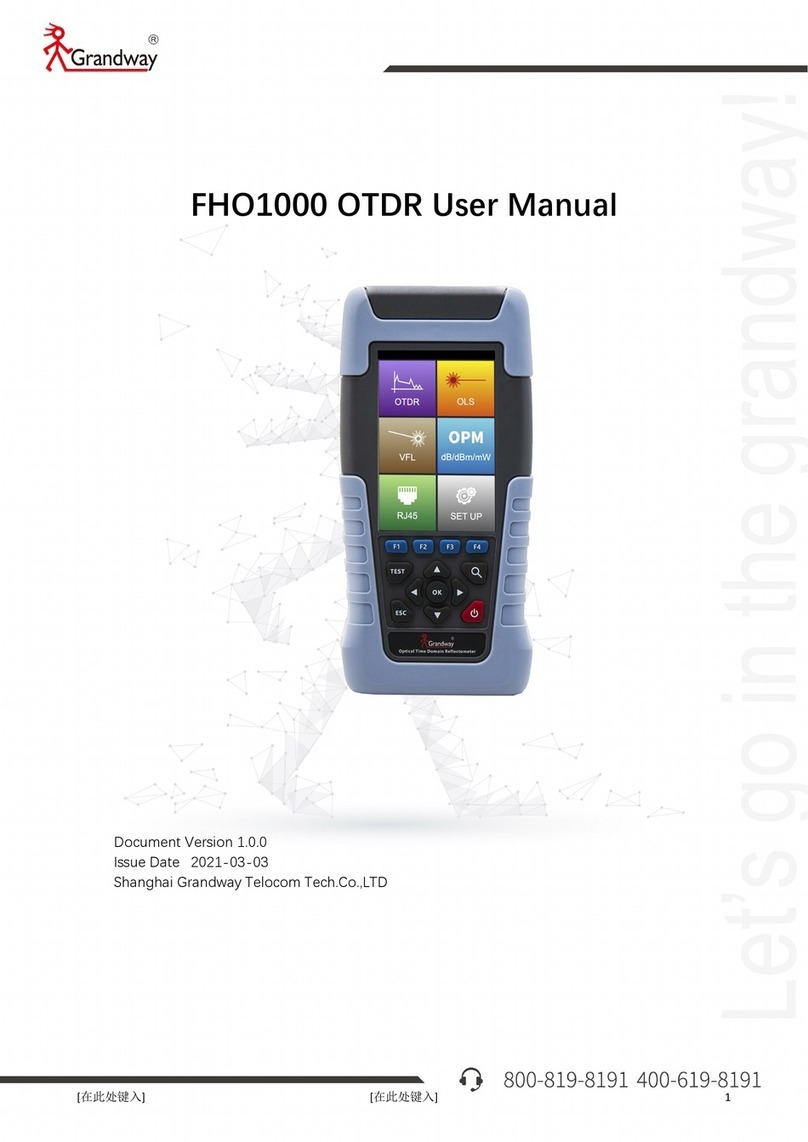
Grandway
Grandway FHO1000 user manual
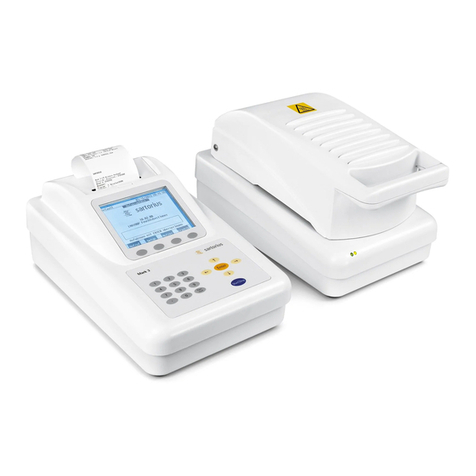
Sartorius
Sartorius LMA100P operating instructions

International Light Technologies
International Light Technologies BiliBlanket ILT750-BILI454 Operation manual
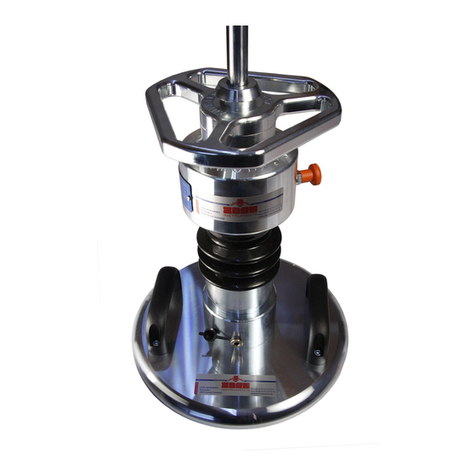
ZORN INSTRUMENTS
ZORN INSTRUMENTS ZFG 3.0 instruction manual

Thermo Scientific
Thermo Scientific 42iQ instruction manual
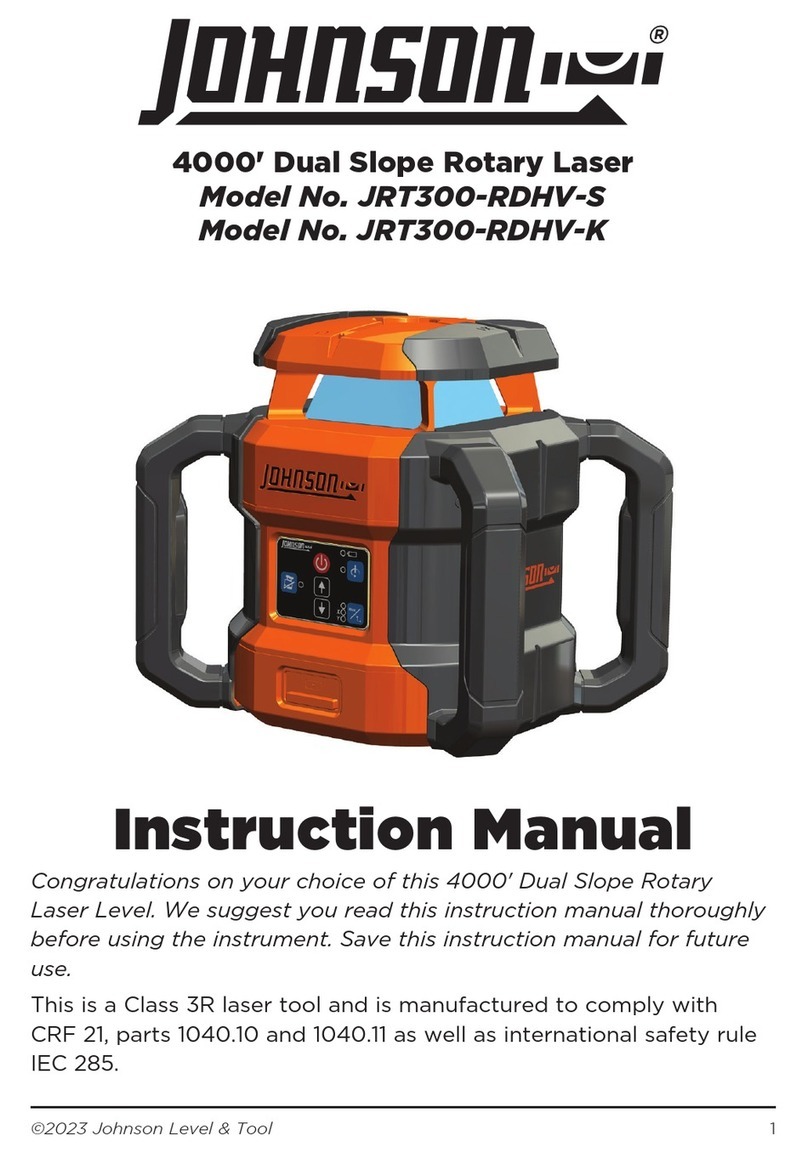
Johnson
Johnson JRT300-RDHV-S instruction manual
